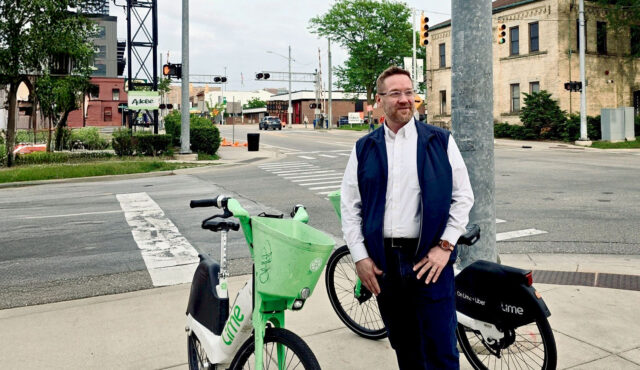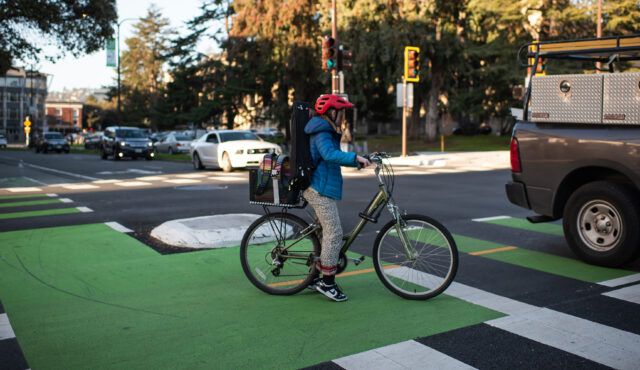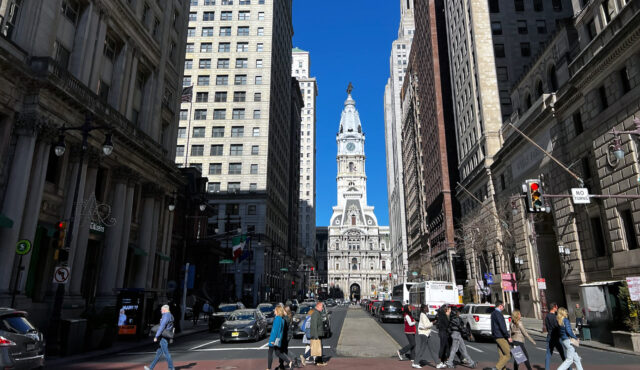Photo courtesy of Minneapolis Public Works TPP on Flickr.

Earlier this month, Vox published an article by Sigal Samuel titled, “A new study finds a potential risk with self-driving cars: failure to detect dark skinned pedestrians.” In January, new research from M.I.T.’s Media Lab found that the facial recognition software Amazon is selling to law enforcement falls short on tests for accuracy, misidentifying the gender of darker-skinned women about 30 percent of the time. And recently, my friend and fellow transportation practitioner Veronica O. Davis reminded me of the study showing how some automatic soap sensors couldn’t recognize darker skin tones.
For me, as someone with dark skin, none of this is new. From automated handwashing to biased facial recognition data, folks of color know all too well that technology is often not built for us.
Many people I respect have been a part of the tech industry and are committing their lives to disrupting and transforming everything from how we communicate to how we get from point A to point B. I think these people are smart. I think they care. I hope they are successful in their endeavors.
But still, something about the tech industry always has me on the lookout for something to go wrong or turn out to not be quite what it first seemed. I do not think everyone in Silicon Valley lives in a bubble with no concept of life outside of their industry—that would be an unfair thing to say. But it’s well-established that the tech industry is primarily white, male, and educated, which leaves me unconvinced that things that come out of the industry can reflect the experiences of those of us who are not. Even as the tech industry calls for more diversity and creates ethics boards, we see similar results.
As ride-hailing tech has developed, the root biases haven’t gone anywhere
Last week, I tuned into a fascinating Eno Center for Transportation webinar on Equity in Ridehailing Services. The webinar laid out Dr. Anne Brown’s Ridehail Revolution: Ridehail Travel and Equity in Los Angeles Study. Many of the headlines you find about Dr. Brown’s research point to all the good that ride-hailing technology is doing. Finally, thanks to Uber and Lyft, neighborhoods full of black and brown people can catch a ride. And sure, that’s great. From New York to San Francisco, I’ve stood on street corners trying to hail a cab without luck while the white people around me were able to quickly jump in and go. Ride-hailing apps make the process of accessing mobility much more available across the cities in which they operate.
Read deeper, though. What you find in the details is that the same biases still exist, even if they are diminished. “Black ride-hail riders…waited up to 1 minute and 43 seconds longer than their white counterparts—still an ugly disparity.” Additionally, “findings suggest that discrimination occurs when people infer rider characteristics” from rider profiles and pick-up locations. I used to identify as “TB” on most apps because I had experienced people seeing my name or my face and cancelling the trip, and I feared that happening again.
Technology is not going to save us…
So what does all this mean? For me, as a black woman, it means that tech won’t save us. The tech industry isn’t diverse, and it will take time to fix that problem. Beyond that, it isn’t inclusive, with those who have gone historically underrepresented in the field often being tokenized and not being put in true decision-making positions. That bias can be coded into the systems we come to depend on, the ones that promise to make things better. So as autonomous vehicles are being tested on our roads as we speak, promising to save lives and change mobility forever, have we truly considered the cost of this technology? Will they be safer for all of us if they cannot see some of us?
If you’ve heard me speak or read something I’ve written before, you know one of my recurring themes is that we can’t just throw up our hands and concede that institutions, industries, and organizations are biased, racist, or lack diversity. We have to remember that people control those things. People also control algorithms and program sensors, and they have a say in who participates in product trials. As people, we can do better. And we should.
… and luckily, we don’t need it to.
Until then, I want us to remember that we already know how to make streets safe. We can’t just sit around and wait for technology to mature. Instead, we need to take action now. We have to save lives with changes to the built environment, better planning, better engineering, better design, and better policy. We should also be fighting racism and bias at every single turn; just like with speed limits, we may need to slow down and be clear that as we lean more on technology, we have to be keenly aware about who is being left behind and who may not be seen.
After Samuel’s article on self-driving cars not seeing people with dark skin, Odetta MacLeish-White, the executive director of Atlanta’s intersectional, equitable transit-oriented communities initiative TransFormation Alliance, reminded us that biased technology won’t keep her black children safe. As it stands today, mobility technology is not going to save Odetta’s or my black children. It’s not going to save me. But smart, inclusive, and brave policy, planning, design, and engineering can do just that. Today.
Let’s not forget that while we wait for the next big thing, we can act now.


